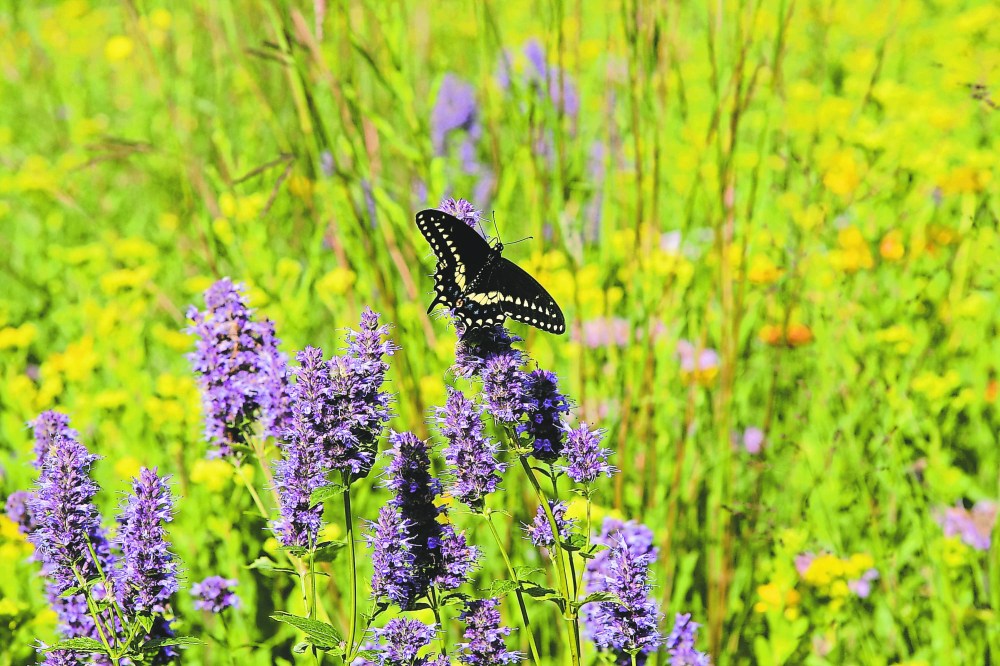New program rewards conservation-minded farmers
Advertisement
Read this article for free:
or
Already have an account? Log in here »
We need your support!
Local journalism needs your support!
As we navigate through unprecedented times, our journalists are working harder than ever to bring you the latest local updates to keep you safe and informed.
Now, more than ever, we need your support.
Starting at $15.99 plus taxes every four weeks you can access your Brandon Sun online and full access to all content as it appears on our website.
Subscribe Nowor call circulation directly at (204) 727-0527.
Your pledge helps to ensure we provide the news that matters most to your community!
To continue reading, please subscribe:
Add Brandon Sun access to your Free Press subscription for only an additional
$1 for the first 4 weeks*
*Your next subscription payment will increase by $1.00 and you will be charged $20.00 plus GST for four weeks. After four weeks, your payment will increase to $24.00 plus GST every four weeks.
Read unlimited articles for free today:
or
Already have an account? Log in here »
Hey there, time traveller!
This article was published 30/11/2023 (712 days ago), so information in it may no longer be current.
Canadian grasslands are some of the most endangered ecosystems in the world, and a new incentive program between Ducks Unlimited Canada and Farm Credit Canada is an opportunity for producers to protect them.
The new Sustainability Incentive Program will complement Ducks Unlimited Canada’s (DUC) Marginal Areas Program (MAP) on the Prairies. Producers who participate in MAP in Alberta, Saskatchewan and Manitoba will be paid to convert unproductive cropland into a more biodiverse state by planting perennial forage.
“Grasslands are declining in acres. They’re one of the most endangered ecosystems in the world, and so if there are ways we can find areas that aren’t good for agriculture, and return those to having some of the same benefits of natural grassland, it won’t replace them, but it can provide some of those same benefits,” said Kristine Tapley, national lead for sustainable agriculture at DUC.

A new partnership between Ducks Unlimited Canada and Farm Credit Canada will pay incentives to farmers to turn unprofitable crop land into habitat for native grasses, birds, pollinators and more. (File)
The MAP program targets areas that are unproductive due to poor drainage, soil conditions, periodic flooding, inaccessibility, or salinity. DUC offers payment upfront for participating in the program through a 10-year agreement to assist producers with the cost of establishing perennials and alleviate the financial burden associated with land management.
Producers who are taking advantage of the MAP program are already having success turning land that isn’t as productive as they would like into habitat for sustainable agriculture at DUC, said Tapley, who runs a bee farm north of Portage la Prairie, located 127 kilometres northeast of Brandon.
“These would be acres that were being cropped, but just aren’t providing the return on investment — they’re just not yielding enough to make the inputs worth it,” she said.
Producers who are not making a return in those areas can then decide if they’d be better suited to aid in sustainability in some way, either by providing habitats for waterfowl and pollinators, retaining water, or establishing a perennial forage.
“We are proud to partner with Farm Credit Canada (FCC) to offer even more of an incentive for producers to consider what works best for their operations and allow them to maximize the full potential of their land,” she said.
Tapley hopes that the partnership will lead to more producers hearing about the importance of sustainability and the program itself, since it’s proven to be such a good fit for so many producers.
“Of course, we need to produce as much food as we can on the land base that we have, and so we’re not suggesting we need to take high quality crop acres out of production,” she said. “Rather, it’s those marginal acres that aren’t doing a good job of producing food.”
After learning about DUC’s MAP program, Curtis Grainger, FCC’s director of sustainability programs, said FCC wanted to join them in supporting farmers in doing what’s right for their individual operations by offering incentives to its customers.
“This partnership … really does focus on land that is very productive from a return on investment standpoint for the producer who would actually make a lot of sense for them to convert that land,” he said. “It’s this space to help them do what’s right for their operations, and also to support sustainability more broadly.”
Under the new partnership, in addition to the DUC payment, FCC customers who are participating in the MAP program can now receive an incentive payment based on a percentage of their total owing with FCC, capped at a maximum payment of $2,000 or $50 per acre of enrolled acres.
The program is an opportunity for producers to provide natural habitats for wildlife and enhance biodiversity responsibly, Grainger said.
“We hope to encourage seeding marginal areas that are unproductive to perennials, helping to improve profitability, pollinator habitat and act as buffer zones,” he said.
The program payments encourage farmers to manage unproductive cropland sustainably while providing habitat for various species.
By sustainably managing unproductive croplands through the program, producers are financially incentivized to contribute to environmental enhancements, which positively impact biodiversity while offering a solution to local land management challenges.
FCC and DUC will work together to create systems and programs like the new partnership to continue to support producers, Grainger said.
Producers interested in singing up for the program can learn more at ag.ducks.ca or fcc-fac.ca.
» mleybourne@brandonsun.com
» X: @miraleybourne
